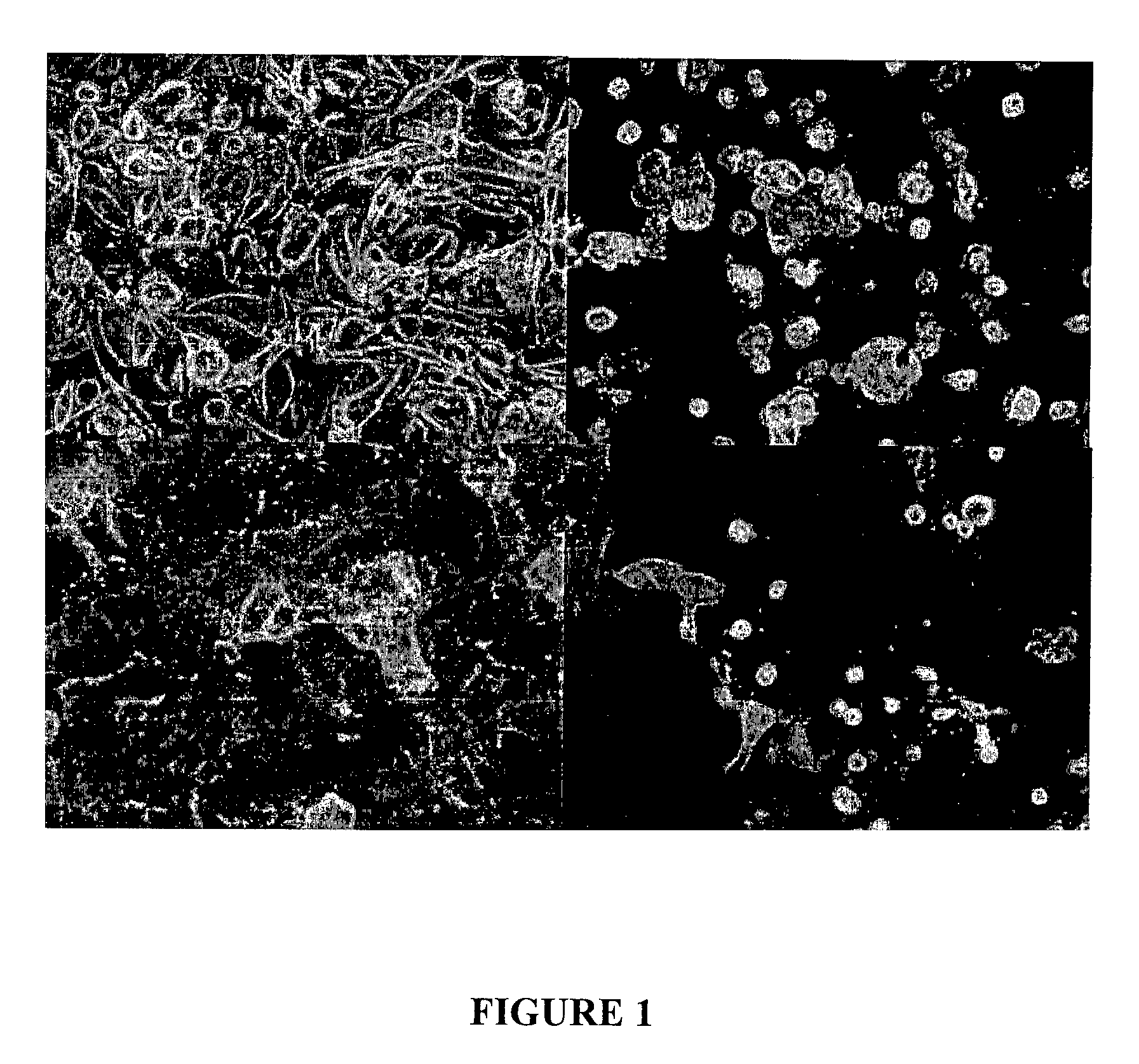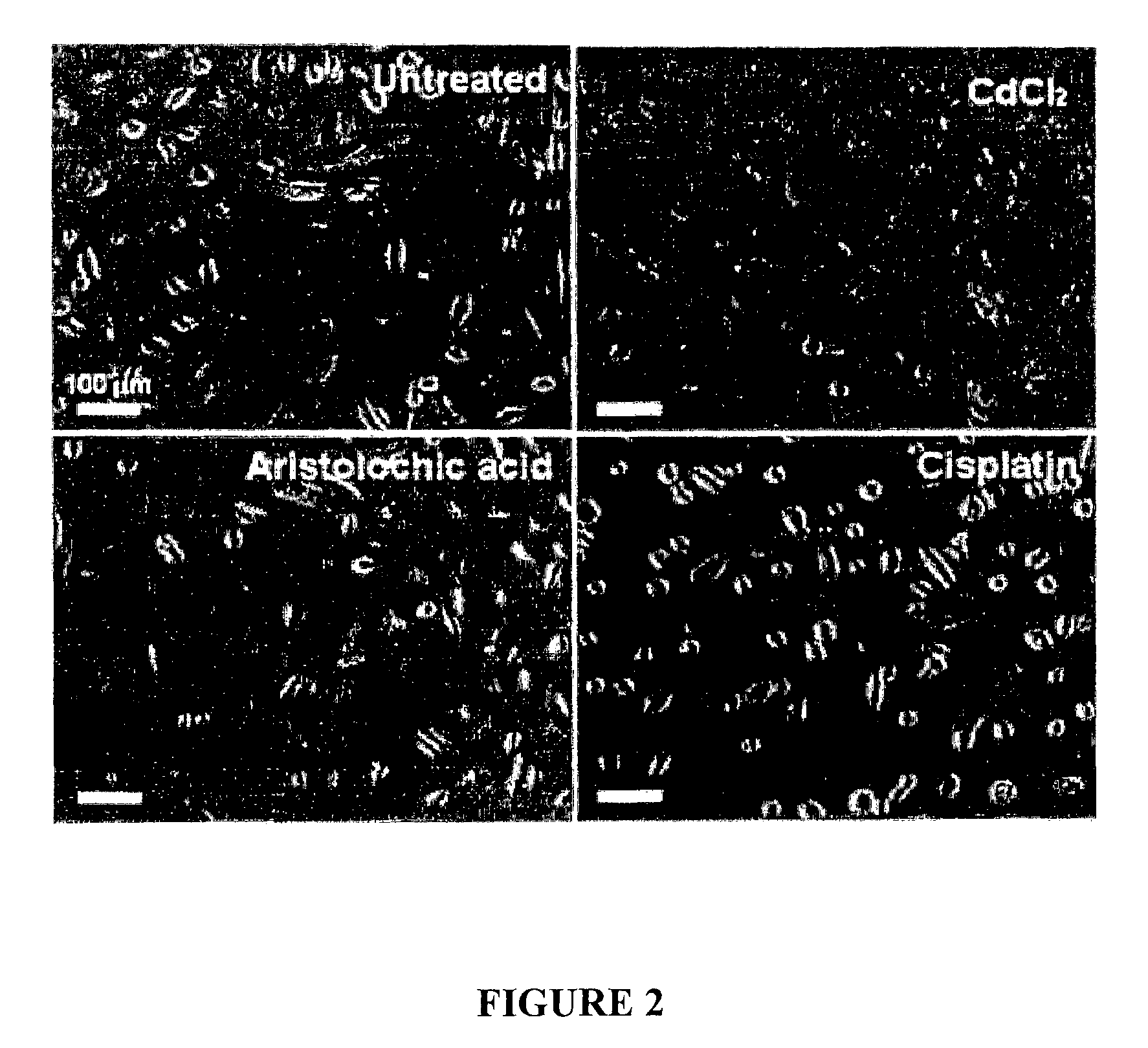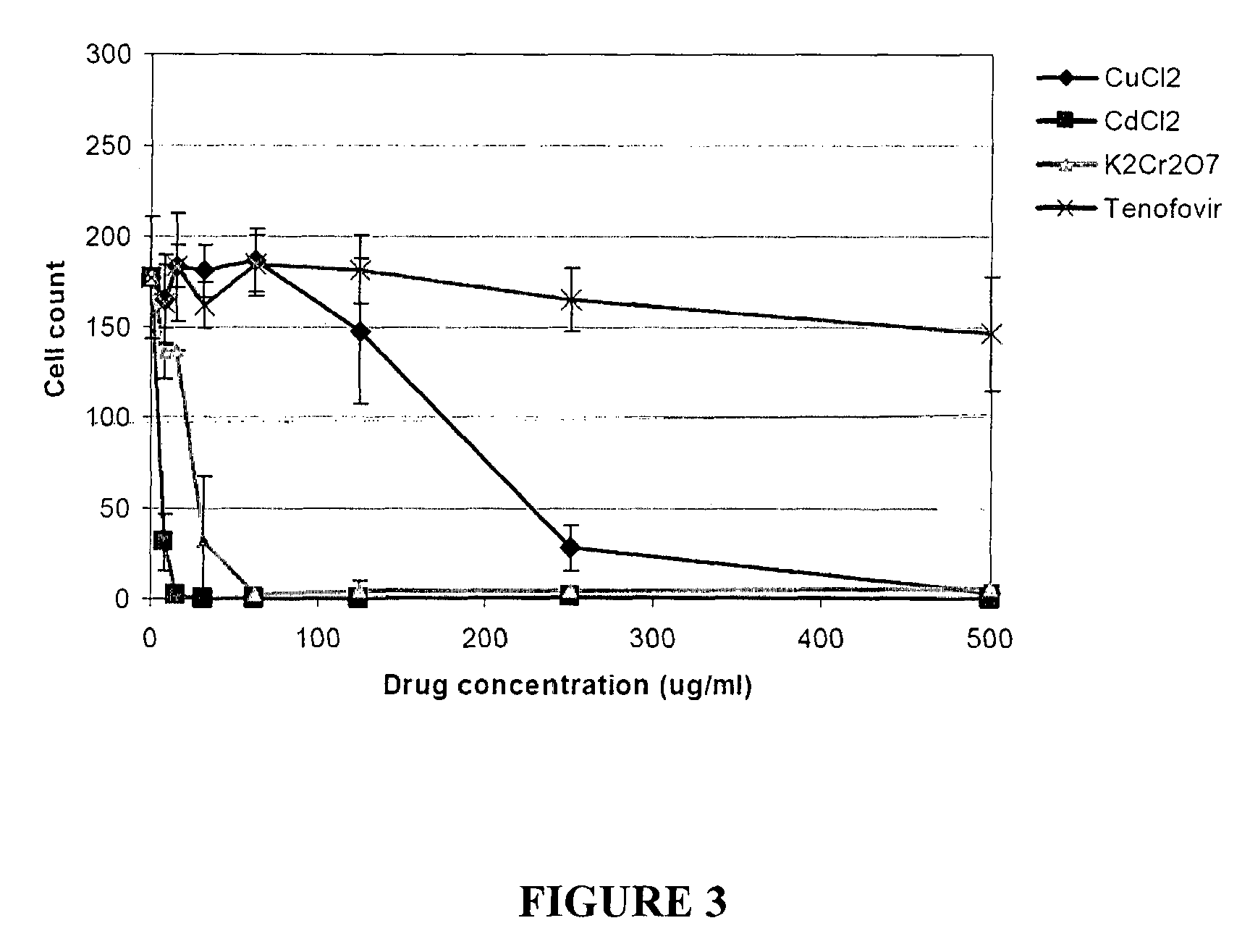In vitro assay for predicting renal proximal tubular cell toxicity
a renal proximal tubular cell and in vitro assay technology, applied in the field of in vitro assays for predicting the toxicity of a compound for renal proximal tubular cells, can solve the problems of increased risks for patients and subjects enrolled in clinical trials, clinical complications, and often underestimated nephrotoxic potential, and achieve the effect of reducing cell numbers
- Summary
- Abstract
- Description
- Claims
- Application Information
AI Technical Summary
Benefits of technology
Problems solved by technology
Method used
Image
Examples
example 1
[0069]It was observed that human primary renal proximal tubular cells (HPTC) show substantial changes in cell morphology when treated with nephrotoxins (see FIG. 1). Also, reduced cell numbers are observed due to cell death. This assay uses cell nuclei count and changes in cell morphology, such as cell area and roundness to assess toxicity on HPTC
[0070]First, cells were seeded into multi-well plates and cultured for 3 days. They were then exposed to a test compound for 16 hours. Cells used were commercial HPTC (American Type Culture Collection; “ATCC”) and HPTC isolated by the inventors from fresh human kidney samples.
[0071]Cells were left untreated or treated with 0.2 mg / ml of tetracycline (ATCC cells) or gentamicin (inventor's isolates).
[0072]Next, cells were fixed and stained, using both nuclear staining and F-actin detection. Treatment with these nephrotoxins led to morphological changes as indicated by F-actin arrangement, decrease in cell area, increase in cell roundness and a...
example 2
[0074]This example was performed using commercial HPTC (ATCC).
[0075]Cells were seeded into multi-well plate and cultured for 3 days. Cells were then left untreated or treated with gentamicin (2.5 mg / ml), CdCl2 (10 μg / ml), aristolochic acid (100 μg / ml), cisplatin (100 μg / ml) or DMSO (50 μg / ml).
[0076]After 24 hrs, cells were imaged by phase contrast microscopy (FIG. 2; gentamicin image and DMSO image not shown).
example 3
[0077]Various renal proximal tubular cell types were used: HPTC (ATCC), LLC-PK1 cells and HK-2 cells.
[0078]Cells were cultured and treated as described in Example 2, using from 0 to 500 μg / ml of CuCl2, CdCl2, K2Cr2O7 or tenofovir (FIGS. 3 to 5) or gentamicin, tetracycline, 5-fluorouracil or As2O3 (FIGS. 6 and 7). Cells were stained, imaged and counted. The different types of PTC responded differently to the compounds and HPTC were most sensitive (FIGS. 3-5).
PUM
| Property | Measurement | Unit |
|---|---|---|
| time | aaaaa | aaaaa |
| concentration | aaaaa | aaaaa |
| concentration | aaaaa | aaaaa |
Abstract
Description
Claims
Application Information
 Login to View More
Login to View More - R&D
- Intellectual Property
- Life Sciences
- Materials
- Tech Scout
- Unparalleled Data Quality
- Higher Quality Content
- 60% Fewer Hallucinations
Browse by: Latest US Patents, China's latest patents, Technical Efficacy Thesaurus, Application Domain, Technology Topic, Popular Technical Reports.
© 2025 PatSnap. All rights reserved.Legal|Privacy policy|Modern Slavery Act Transparency Statement|Sitemap|About US| Contact US: help@patsnap.com



